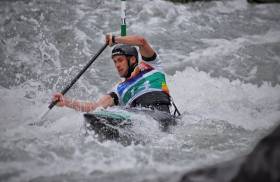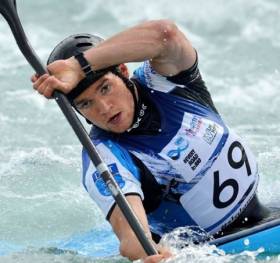Displaying items by tag: Teague
Cochrane and Teague Qualify for Semis of World Cup Final
#Canoeing: Jake Cochrane and Eoin Teague made it through to the semi-finals at the canoe slalom World Cup Final in Prague. Teague, in the K1, and Cochrane in the C1, both qualified from their second runs. Liam Jegou did not in the semi-finals of the men’s C1. He came close in the first run and had three touches, incurring six seconds in penalties, in his second.
Curtis So Close on First Run at World Championships
#Canoeing: Under-23 competitor Sam Curtis came frustratingly close to direct qualification on his first run at the canoe slalom World Championships in Krakow, Poland, this morning. The Irish paddler, competing in a K1, completed the course in 84.08 seconds, but he touched the second last gate and was given a two-second penalty. It pushed him above the direct qualification mark. Eoin Teague set a time of of 89.71, including four seconds in penalties for touches on gates two and 14. However, he dropped out of contention in this run when he was retrospectively ajudged to have missed gate two and given a 50-second penalty. Noel Hendrick was also down the rankings. He was penalised 50 seconds for missing gate 13.
Canoe Slalom World Championships, Under-23 and Junior, Krakow, Poland (Irish interest; selected results)
Men
Under-23 K1 (racing kayak) – First Run (Top 30 Qualify): 35 S Curtis 86.08; 69 E Teague 137.71; 70 N Hendrick 138.45.






























































